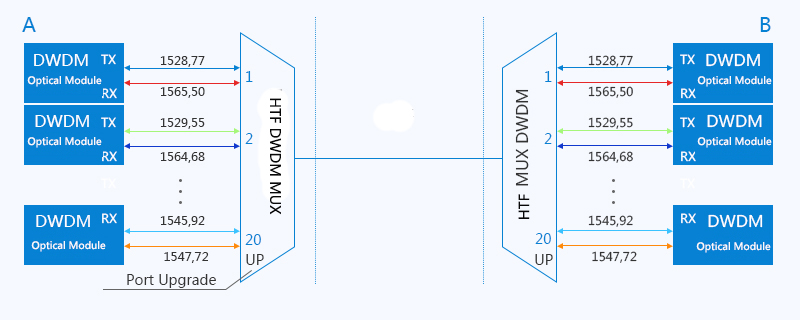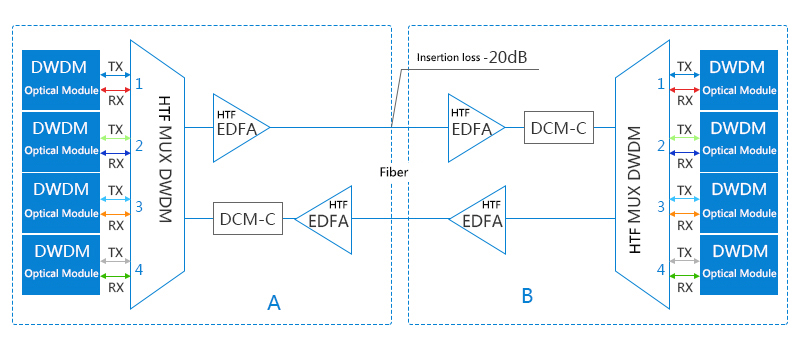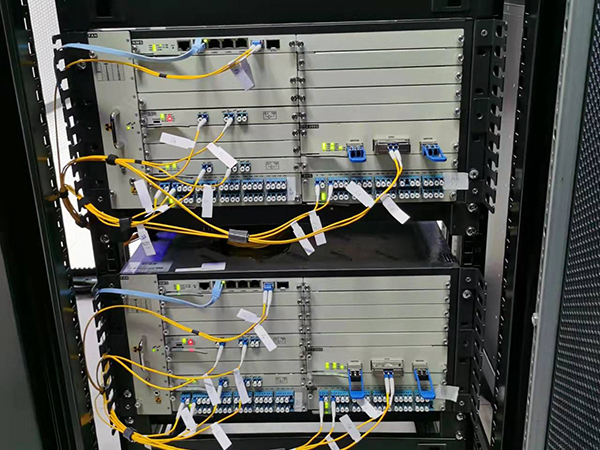Dense Wavelength Division Multiplexing (DWDM) is a wavelength division multiplexing (WDM) technology that expands the transmission capacity of existing optical fiber networks. Save a lot of fiber resources in transmission applications. There are two main types of DWDM systems at present: passive DWDM systems and active DWDM systems.
Passive DWDM system
Active components such as fiber amplifiers and dispersion compensators are not used in passive DWDM systems. The transmission distance of this system will be limited by the transmit power of the optical module, but it has the advantage of high channel capacity and is mainly used in metropolitan area networks and high-speed networks. channel capacity in high-speed transmission lines.

Active DWDM is a system that includes transponders that perform optical-electrical-optical (OEO) conversion. In addition, there are multiple erbium-doped fiber amplifiers (EDFA) in the system to ensure that the receiving end can receive high-quality optical signals, but the number of erbium-doped fiber amplifiers (EDFA) will be affected by the fiber type, the number of wavelength channels, Transmission rate, signal-to-noise ratio (OSNR) and other factors.

The link length of an active DWDM system is not only related to the number of fiber amplifiers and the signal-to-noise ratio (OSNR), but also to the dispersion of the optical signal. Therefore, when designing an active DWDM system, the dispersion of the optical signal should be taken into account. If necessary, a dispersion compensator (DCM) can be added to the active DWDM system. It should be noted that the dispersion compensator (DCM) It will increase the insertion loss of the optical fiber link, and will also affect the transmission distance of the active DWDM system.






